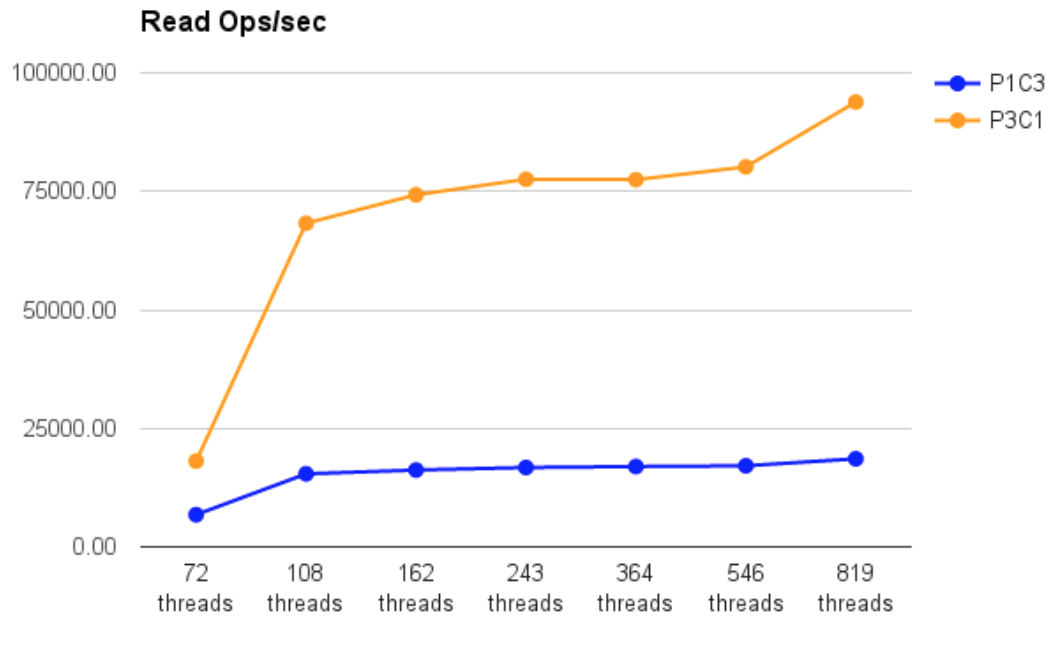NoSQL Performance
Containerized NoSQL Workloads: Cassandra performance gains with running Portworx Enterprise
In this example, we show how Portworx Enterprise's network-optimized 3-way replication out-performs Cassandra's 3-way replication when running on a 3-node cluster. We compared the performance between the following two configuration and ran these tests on the same servers as the tests above.
- Portworx Enterprise replication factor set to 1 and Cassandra replication factor set to 3. (Legend: P1C3 in the diagram below)
- Portworx Enterprise replication factor set to 3 and Cassandra replication factor set to 1. (Legend: P3C1 in the diagram below)
The results demonstrate that running with Portworx Enterprise for Cassandra workloads provide significant gains. Portworx Enterprise's breakthrough performance for containerized workloads along with the cloud-scale data protection and data services make it a compelling container data services infrastructure for Cassandra and other no-sql workloads
The Read OPS/sec and Write OPS/sec improvements graphs show how running with Portworx Enterprise's three-node replication deliver a significantly better OPS/sec than running with Cassandra's three-node replication. This Portworx Enterprise performance is also made possible because Portworx container software stack intelligently leverages NVMe SSDs to deliver high OPS/sec and low latencies.
Cassandra with Portworx Enterprise - Read OPS/sec improvements

Cassandra with Portworx Enterprise - Write OPS/sec improvements

The latency graphs below demonstrate the network-optimized replication performance of Portworx Enterprise as it accelerates cassandra performance by delivering IO at very low latencies to the Cassandra Container
Cassandra with Portworx Enterprise - Read Latency improvements

Cassandra with Portworx Enterprise - Write Latency improvements
